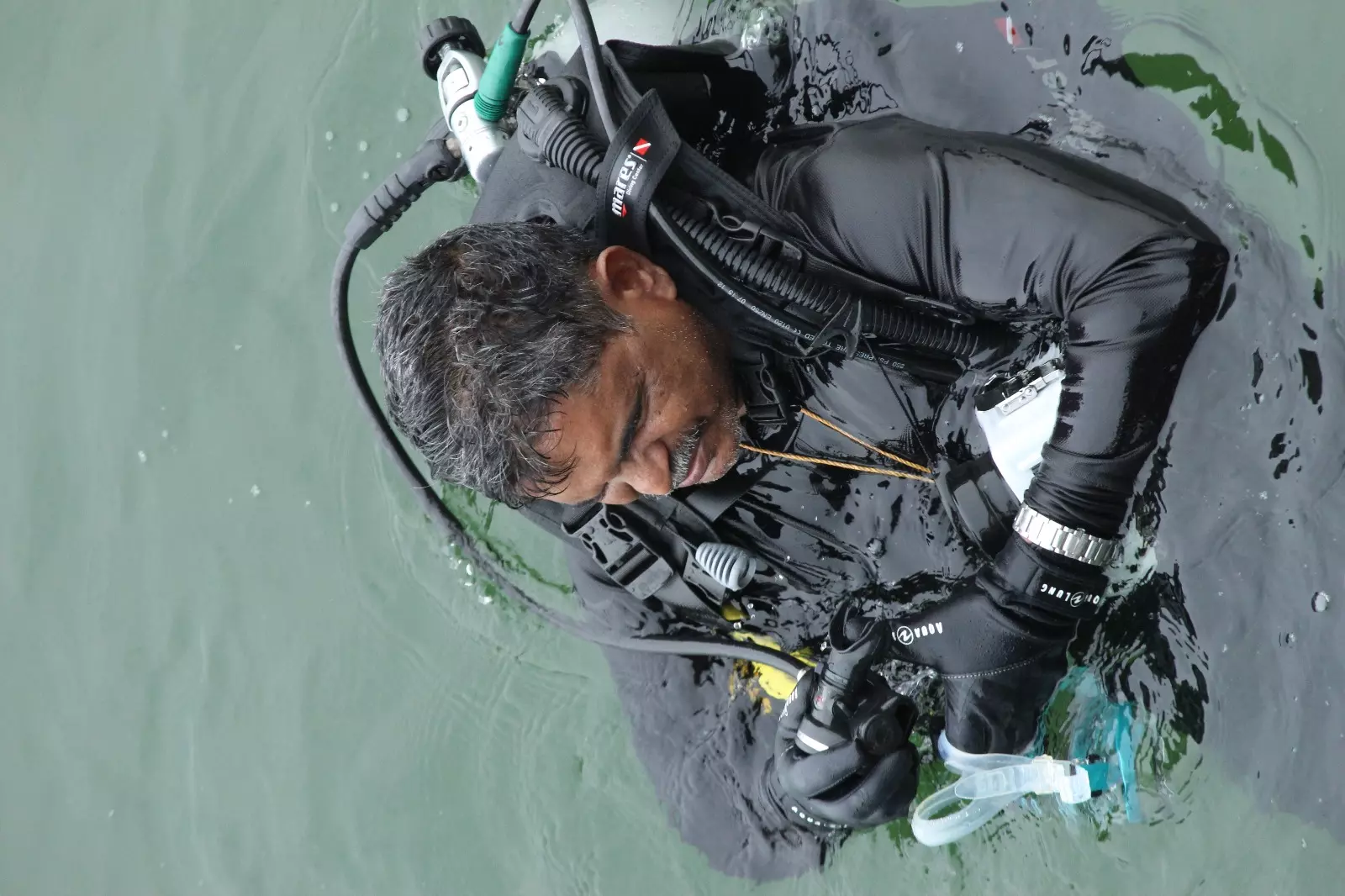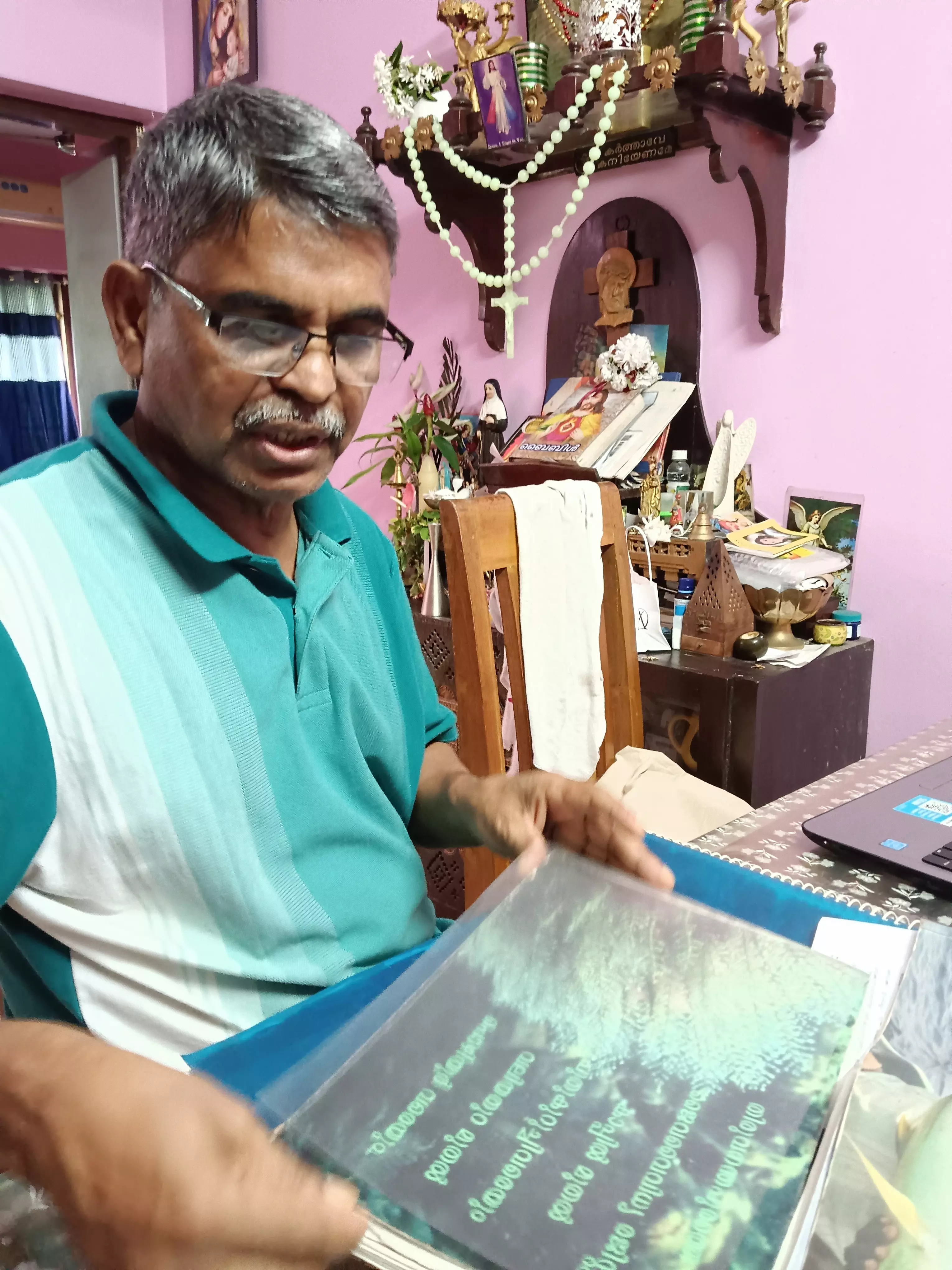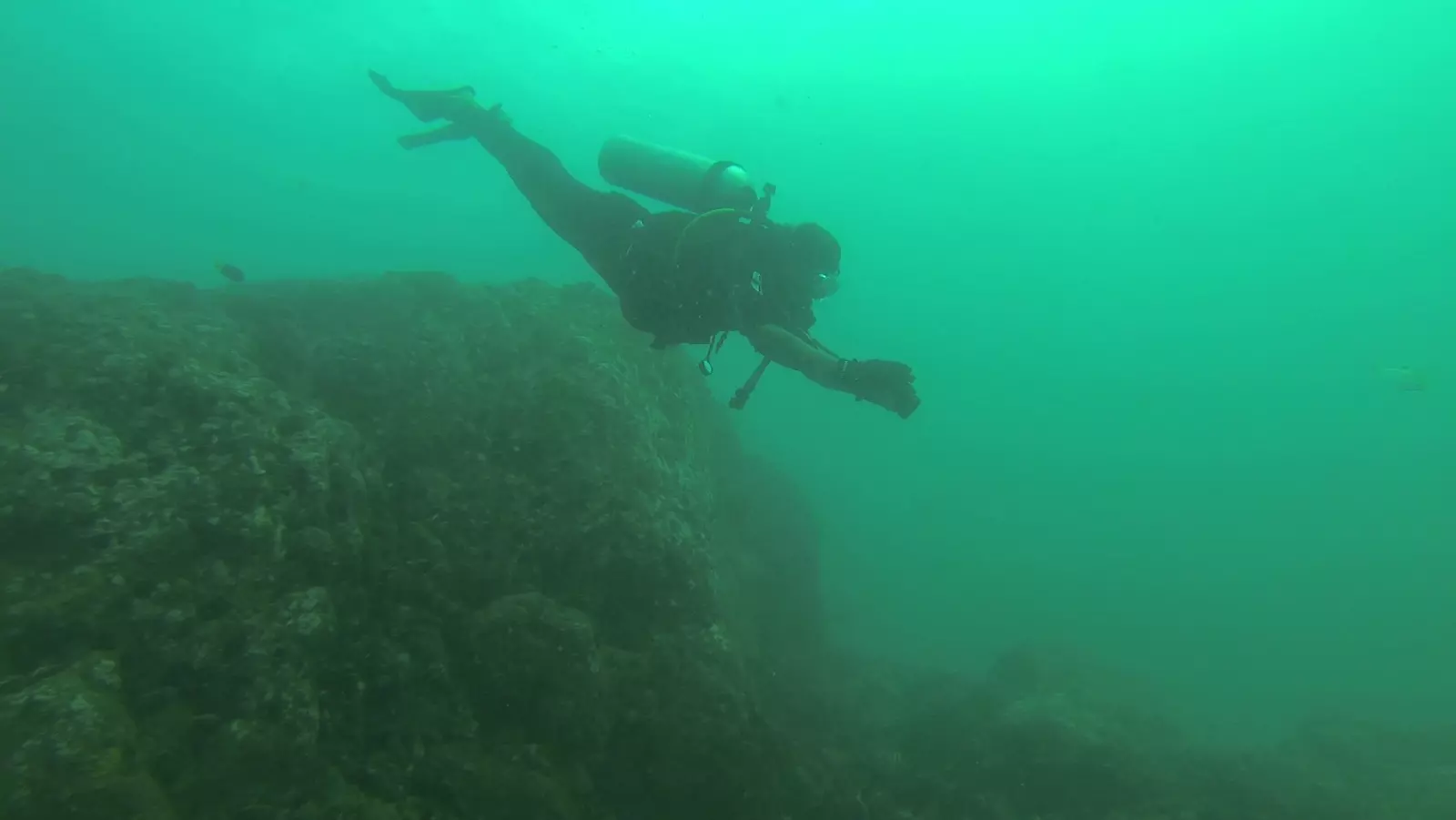
- Home
- India
- World
- Premium
- THE FEDERAL SPECIAL
- Analysis
- States
- Perspective
- Videos
- Sports
- Education
- Entertainment
- Elections
- Features
- Health
- Business
- Series
- In memoriam: Sheikh Mujibur Rahman
- Bishnoi's Men
- NEET TANGLE
- Economy Series
- Earth Day
- Kashmir’s Frozen Turbulence
- India@75
- The legend of Ramjanmabhoomi
- Liberalisation@30
- How to tame a dragon
- Celebrating biodiversity
- Farm Matters
- 50 days of solitude
- Bringing Migrants Home
- Budget 2020
- Jharkhand Votes
- The Federal Investigates
- The Federal Impact
- Vanishing Sand
- Gandhi @ 150
- Andhra Today
- Field report
- Operation Gulmarg
- Pandemic @1 Mn in India
- The Federal Year-End
- The Zero Year
- Science
- Brand studio
- Newsletter
- Elections 2024
- Events
Researcher who documented marine life wants to go 'digital' with complete findings

As a child, Robert Panipilla often slept on the sand near his hut looking at the stars like many of his friends in the fishermen community did. The children had no rooms at their huts to sleep during the night those days. Robert would make a pillow out of sand to place his head on it. It was while making a sand pillow during the night, his father approached him and asked him to look towards...
As a child, Robert Panipilla often slept on the sand near his hut looking at the stars like many of his friends in the fishermen community did. The children had no rooms at their huts to sleep during the night those days. Robert would make a pillow out of sand to place his head on it. It was while making a sand pillow during the night, his father approached him and asked him to look towards the eastern sky. He then pointed to a small cluster of stars in the southeastern horizon.
With his deep traditional knowledge and wisdom, Robert’s father was good at finding the pockets in the sea where fishes were found abundantly. He was also aware of the unique characteristics of each species and crafted fishing equipment accordingly. It was this traditional knowledge that Robert acquired from his father and his friends coupled with his own experiences in the field that eventually made him study in detail about the sea and its unending mysteries.

It took almost two years for Robert Panipilla (in the pic) and his team to document the stretch.
A storehouse of knowledge when it comes to sea, Robert was made the project coordinator of People’s Marine Biodiversity Register when the Kerala State Biodiversity Board (KSBB) decided to document it in 2013. Even though Robert submitted a detailed survey report of the Thiruvananthapuram coast with a number of new findings in 2015, the KSBB published only 40 per cent of it and omitted the rest without any valid reason. The sad part is that the register is yet to be made public. Irked by this, Robert is now planning to bring out a digital version of the complete report so that it will be accessible to all.
The idea of the district-wise People’s Marine Biodiversity Register was to document the marine species and animals, habitats and traditional knowledge system of the fishermen in the coastal districts of Kerala. As the coordinator of the project, Robert and his team covered the 78-km-stretch of the sea from Pozhiyoor to Kappil in the Thiruvananthapuram district of Kerala. The four-member team, led by Robert, completed the survey in two phases and submitted the report in 2015. The survey recorded vital data on demersal (fish living and feeding on or near the bottom of the sea) species around the reef areas and documented traditional knowledge on navigation, bottom configuration of the seabed, ocean currents, and wind patterns.
Chief minister Pinarayai Vijayan released the Marine Biodiversity Register published by KSBB in 2017. Although Robert requested the board to serve a copy of the register to him, he was denied the same on account of ‘official reasons’. Robert didn’t have time to follow the matter further as he found a new job in the US and soon left for the country. On his return, in 2024, he filed an application under the RTI act and managed to get a copy of the Marine Biodiversity Register. It was shocking that more than 60% of information that Robert and his team had collected was omitted in the Marine Biodiversity Register released in 2017.

Robert Panipilla with the copies of the two volumes of the report that he submitted in 2015.
Why did they edit out vital information in the report that was filed in two volumes? The officials of the KSBB tried to explain the lapse citing scientific excuses. They said the KSBB used only the portion that was relevant. However, sources inside the KSBB strongly believe that a major portion of the report was omitted mainly due to lack of vision. “They have omitted many vital facts included in the report. Five marine phyla including bryozoa and annelids (worms) and 40 varieties of crabs, 35 types of jellyfish and 16 corals are some of the main species that the KSBB omitted. I am planning to bring out a digital version of the complete report that I had submitted in 2015 soon,” said Robert, who heads the Friends of Marine Life (FML), a collective of marine researchers.
It was with the help of fishermen that Robert documented the marine life along the Thiruvananthapuram coast. He had included the names of those fishermen with due credit, but all the names were omitted when the final report was published. “It is disappointing that the names of more than 100 fishermen who helped me document the marine species and animals during the survey were omitted. They provided significant data regarding the wide variety of fish and other animals in the stretch. It could not have been possible without their help and cooperation. I don’t know why the KSBB deleted their names,” he said.
Born in the family of fisherfolk in Valiyathura (Thiruvananthapuram), Robert grew up with the sea around him, a reason why despite not being a graduate, he is considered a storehouse of knowledge when it comes to marine life. Kadalarivukalum Neranubhavangalum (Eyes on Their Fingertips in English), an autobiography written by Robert, has been included in the BA (Malayalam) syllabus of the University of Calicut. If the fishermen have to fish in the reefs, they must reach there before dawn in the sea, according to Robert.
“The nets that are cast in the sea at night can be retrieved only when the light from kavarukal (fireflies in the sea) die out early in the morning. At night, they stick to the nets and shine bright, keeping the fish away. But early in the morning, when the sun rays begin to spread in the waters, the kavarukal are unable to emit light. The window of time between the shining of kavarukal and their dying out is called kavarachil. This is the time the fish begin to forage and get caught in the nets. That’s why fishing during kavarachil is popular,” writes Robert in the prologue to Eyes on Their Fingertips. The book has interesting accounts of fishermen about their encounters and challenges.
It was while working with the Program for Community Organization (PCO) that Robert developed his talents on research and training in the marine sector. For nearly a decade, he participated in the seminars and workshops organised by the research wing of PCO. The exchange of knowledge with the marine scientists helped him a lot. He had the privilege to engage in several initiatives related to artificial reefs.

It took innumerable dives to the sea which helped Robert Panipilla document the rare species and animals.
In Kerala, the concept of artificial reefs emerged as an innovation of the hook-and-line fishermen in Thiruvananthapuram. Robert underwent training under the guidance of Sri Tency in Auroville, Puducherry where he developed the triangular reef module in ferrocement, a design still employed by nearly all agencies in India, including the Central Marine Fisheries Research Institute. He then attended various workshops and international seminars on marine conservation. Documenting the traditional knowledge of the fisherfolk, however, dominated his research.
“We completed the survey in two years. It was not easy and the process involved collection of data and cross-checking. We would wait for hours to trace a species that we were looking for. Since no one has so far done a survey like this, we had to start from the scratch,” said Robert.
Marine species such as brown-banded cusk-eel, sand crab, Indian ringed skate, eyed sole, pastel tilefish and Turkey moray were the significant findings in the survey. Even though a specimen of the brown-banded cusk-eel was recorded from Madras in 1888, this is the first record of it from the southwest coast of India. The Sand Crab was first reported by Boyko from Madras, but it is the first time it is recorded from the south-west coast of India. Indian ringer skate is poorly known but the team could spot the species during their survey. The recording of eyed sole, according to Robert, is the first of its kind from Kerala coast, probably from the west-coast of India. The pastel tilefish is a rare species in the seas around India and inhabits in the sandy areas.
“I am upset mainly because the huge data that we collected is nowhere now. We got our remuneration for the data collection but it never ends there. And that’s why I have decided to go ahead with a digital version of the two volumes of the survey that I had submitted in 2015,” he added.
For Robert, the journey with the sea never ends. He has brought a pair of diving suits and advanced cameras from the US for his upcoming research and documentation works. "But I will start further research and documentation only after releasing the digital version of the Marine Biodiversity Register. It is the need of the hour," he said. "I have been documenting the old songs circulated among the fisherfolk in the region. Many traditional knowledge and techniques have been transferred from one generation to the other. There is no written record available anywhere. So, if we don’t document and preserve them, they will be lost soon,” he added.
